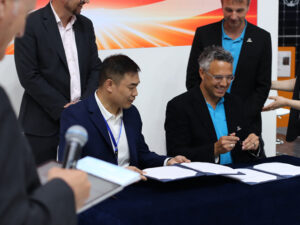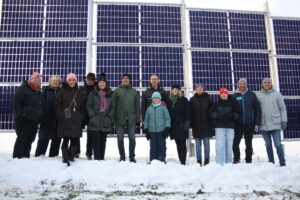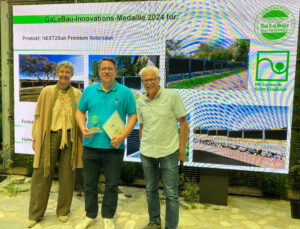Since the 23rd of September 2019 an Agro-photovoltaic open space plant with 4,1 MW peak is built in Aasen, a district of Donaueschingen. Responsible for the project is the company Next2Sun GmbH, who has had first successes with an identical Agro-photovoltaic plant with an energy output of 2 MW peak.
Agro-photovoltaics – a new approach
With the innovative mounting system of the Next2Sun the coexistence of solar power generation and agriculture becomes possible. Thus, herbage will continue to be harvested on the solar park area in the future. Likewise, due to the vertical assembly of the frameless glass-glass modules, green stripes under the modules will be created. This offers new habitats for insects, moths and small mammals – and thus food for the avian fauna.
East-west-orientation of the bifacial (double-sided) solar cells
Through the vertical east-west elevation of the bifacial solar modules, the plant primarily produces energy in the morning and evening hours and thus leads to a better network integration in regions, where conventional southern orientated PV plants are already connected.
Data and facts of the project in Donaueschingen-Aasen
The Agro- photovoltaic system is being built in the Donaueschinger district Aasen on an area of about 14 hectares. In total, 5.800 frame elements and approx. 11.000 bifacial solar modules are going to be installed in the following weeks. The plant produces around 4,1 MW peak, enough electricity for 1.200 households. The investment volume is 3.2 million euros and commissioning is scheduled for early 2020. The future operator of the plant is, after turnkey construction and commissioning, the Bürgersolarkraftwerke Donaueschingen-Aasen GmbH, while the plant is financed by Solverde Bürgerkraftwerke Energiegenossenschaft eG.
Background: What are bifacial solar panels?
Bifacial solar panels are able to use the sunlight from both sides. The insertion of the solar cells between two glass panels, which are about 2.5 mm thick, creates a stable module in the sandwich design, which is superior in yield compared to conventional monofacial modules.





